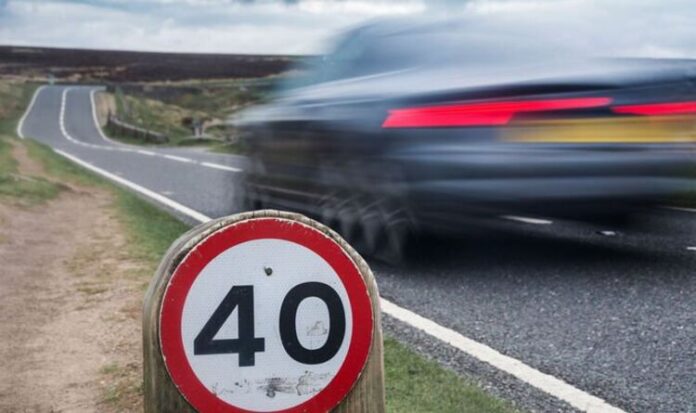Once the thrill of being a new driver fades, driving becomes a mundane and underwhelming reality. Yet each journey conceals potential disaster. Imagine a coin toss deciding the fate of your drive each day; such is the reality of our roads when dangerous habits come into play.
With this in mind, let’s look at several driving habits that transform ordinary trips into deadly gambles. Buckle up as we journey through a junction of dangerous driving habits that can quickly lead to irreversible disasters:
Distracted Driving

Multitasking has no place behind the wheel, yet an alarming number of drivers engage in distracted driving. Whether it’s glancing at a text message, fiddling with the radio, or reaching into the backseat, these brief moments of distraction can lead to dire consequences.
Indeed, distracted driving often leads to delayed response times or, worse, missing critical road events entirely, such as a car stopping abruptly ahead. It increases the risk of collisions, endangering not just the driver but other road users as well.
The solution lies in minimizing distractions before starting your journey. Program your GPS, set your music playlist, and secure any loose items beforehand. If an urgent task arises, such as taking a call, find a safe place to pull over first.
Speeding

Driving over the speed limit might get you to your destination faster, but at what cost? Speeding reduces your control over the vehicle and increases stopping distance, turning minor incidents into potential catastrophes.
The aftermath of speeding can include receiving fines and demerit points, higher insurance premiums, or a suspended license. More tragically, speeding can result in devastating crashes that lead to serious injury or loss of life.
To resist the urge to speed, leave for your destination early, and remind yourself that the risks far outweigh the benefits. If you are running late, communicate your delay rather than rushing – safety should always take precedence.
Running Stop Signs and Traffic Lights

Disregarding stop signs and traffic lights is a dangerous habit that invites disaster. These traffic control devices are crucial for maintaining order and safety on the road.
Violating these rules can lead to dangerous intersection collisions, often resulting in severe injuries and substantial vehicle damage. Legally, running a stop sign or red light can lead to hefty fines and points on your license.
Combat this by always obeying traffic signals and signs, no matter how empty the road might appear. Treat driving as a communal activity where everyone’s safety matters.
Tailgating
Following too closely, or tailgating, is a common but risky habit. It reduces the time a driver has to react if the vehicle ahead stops or slows down unexpectedly, increasing the likelihood of a rear-end collision.
The consequences can include injuries, vehicle damage, increased insurance rates, and even potential legal trouble. Rear-end collisions can lead to whiplash and other serious injuries.
Prevent tailgating by maintaining a safe distance between you and the vehicle ahead, ideally a three-second gap. This distance should be increased in adverse weather conditions or when driving at night.
Reckless Overtaking

Reckless overtaking is a perilous habit that can lead to disastrous results. It involves surpassing another vehicle without considering the distance and speed of oncoming traffic or the road conditions ahead. Unfortunately, it’s a habit born out of impatience, overconfidence, or a gross underestimation of risk.
The consequences of reckless overtaking are severe. It can lead to head-on collisions with oncoming traffic or side-swipe accidents with the vehicle being overtaken. These accidents often result in serious injuries or even fatalities.
To avoid this, drivers must always judge the road situation carefully before overtaking. This includes considering the speed and distance of oncoming vehicles, the length of the overtaking lane, and any potential hazards on the road. If in doubt, it’s always safer to stay behind and wait for a safer opportunity to overtake.
Drowsy Driving

Driving while fatigued is a surprisingly common yet risky habit. Many people underestimate the impact of tiredness on their ability to drive, pressing on despite clear signs of exhaustion. A tired driver’s response time slows, their ability to concentrate diminishes, and in extreme cases, they may even fall asleep at the wheel.
The consequences of driving without adequate rest can be grave. A fatigued driver can drift into other lanes or off the road entirely, resulting in a serious accident. Besides the risk of physical harm, falling asleep at the wheel can also lead to severe legal penalties.
Prevention begins with recognizing the signs of fatigue and taking them seriously. If you feel tired, pull over at a safe location and take a break. Even a short nap can significantly improve alertness. Plan long trips with plenty of rest stops and, if possible, share the driving duties with others to ensure everyone’s safety on the road.
Skipping the Seatbelt
Failing to wear a seatbelt is an easily avoidable but potentially disastrous habit. Seatbelts significantly reduce the risk of being ejected from a vehicle during a crash and help to distribute the forces of a crash across the strongest parts of the body.
Not wearing a seatbelt can result in severe injuries or fatalities in a collision. In fact, the person not wearing their seatbelt isn’t the only one at risk; upon impact, an unrestrained body becomes a fast-moving projectile that can strike fellow passengers as well as those outside the vehicle.
Ensure to buckle up every time you get in a vehicle, regardless of the distance you are traveling. Encourage other passengers to do the same, setting a good example and ensuring everyone’s safety.
Drunk Driving

Alcohol consumption impairs driving ability. Yet many individuals still gamble with their lives and others by choosing to drive while under the influence. Even a seemingly small amount of alcohol can alter perception, diminish motor skills, slow reaction time, and hinder decision-making abilities.
The legal repercussions of drinking and driving are nothing short of severe. The driver may be required to use a breathalyzer, face license revocation, or even serve jail time. More devastating, however, is the potential for causing a horrific accident, leading to severe injuries or death.
Preventing drunk driving is straightforward: don’t drink and drive. If you consume alcohol, designate a sober driver, use public transportation, hail a taxi or request a ride-share service. Spending a little money or time is always better than taking an unnecessary and unjustifiable risk. While using a court-mandated portable breathalyzer may not sound like the end of the world, death as a result of drunk driving is, in fact, the end of the world for those who are killed.
Safe Driving Is in Your Hands
Dangerous driving habits may seem insignificant at the moment, but they carry the weight of causing devastating disasters. These habits increase the risk of catastrophic accidents and severe legal repercussions. Fortunately, the power to change rests in our hands. By understanding these hazards and implementing the preventive measures discussed, we can collectively contribute to safer roads and happier journeys. Remember, every decision made on the road can ripple outwards, affecting not only you but also other road users and even entire communities. Let’s make those decisions count for safety.









